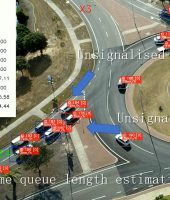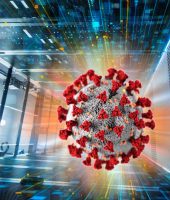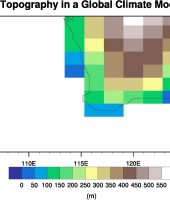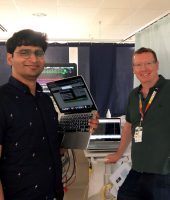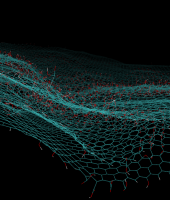Traumatic Brain Injury: Predicting ICU outcomes before they worsen
Over 2,000 Australians suffer from a traumatic brain injury each year, with around half of those patients becoming severely disabled or losing their life. The other half often fully recover from their injury.
For the past 50 years, medical scientists around the world have worked to apply forecasting methods to predict intercranial hypertension, otherwise known as a build-up of pressure in the brain, but none have been successful.
Pawsey’s Topaz supercomputer was responsible for processing significant amounts of data and training models to successfully predict the probability of an intercranial hypertension event before it occurs.
The challenge
Over 2,000 Australians suffer from a traumatic brain injury each year, with around half of those patients becoming severely disabled or losing their life. The other half often fully recover from their injury.
One of the most likely reasons for such negative health outcomes is delayed intervention, with intervention methods such as sedation often delivered too late.
For the past 50 years, medical scientists around the world have worked to apply forecasting methods to predict intercranial hypertension, otherwise known as a build-up of pressure in the brain, but none have been successful.
Additionally, there have been minimal improvements in traumatic brain injury outcomes since the late 20th century. Frustrated by this plateau, Intensive Care Specialist and Director of Research at Royal Perth Hospital, Dr Robert McNamara began to question how intensive care departments can better manage brain injury.
The team then partnered with Department of Health data scientists, led by Head of Data Science, Shiv Meka, to develop an algorithm with the power to analyse the collected data and predict whether the pressure will rise in a patient’s brain.
“Like any bruise or broken bone, swelling to the brain comes in about 12 to 24 hours after the injury has occurred. But unlike your limbs, the brain sits within the skull that acts as a closed box,” said Dr McNamara.
“Once you reach the limits of this box, the pressure ramps up quite significantly. You can be sitting in intensive care looking at some of the pressure that’s in the safe zone and with very little warning or sometimes no warning at all, suddenly that patient’s pressures are in unsafe levels. This is why we believe being able to predict an intercranial hypertension event is so critical to patient outcomes.”
Watch the case study video here:
The solution
In 2019, Dr McNamara and his team embarked on the pathway of multimodal neuromonitoring – gathering more types of specific data from each patient and looking at multiple aspects of their brain function. The ICM Plus software (developed in Cambridge) allowed the team to capture every heartbeat, pressure wave and vital sign coming off the intensive care patient at a high frequency.
The outcome
Over 40,000 hours of data was collected from over 200 patients from Royal Perth Hospital, Royal Prince Alfred Hospital and Royal Melbourne Hospital.
After working on around 20 different models, Shiv and his team created one that worked – the world’s first operational traumatic intercranial hypertension prediction algorithm. The architecture was designed to process all patient data and provide the necessary
information to predict intercranial hypertension with 90 per cent accuracy using survival analysis.
“The model was developed to predict the probability of an intercranial hypertension event occurring up to 20 minutes before it happens. This then alerts clinicians when a patient is high risk and when they must activate intervention methods,” said Shiv.
Pawsey’s supercomputer, Topaz (previously Zeus) was responsible for processing such significant amounts of data during the model training. Pawsey’s Nimbus cloud is securely facilitating the substantial workflows and computational tasks of the prediction aspect of the research.
The next phase of this research will begin in December 2022, where clinicians will use the model to apply interventional methods prior to an intercranial hypertension event and identify whether this improves patient outcomes.
Project Leader.

Rob and Shiv in hospital after their first successful streaming trial

